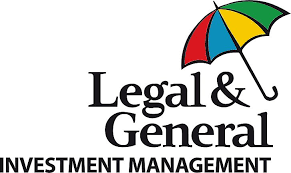In today’s interdependent global economy, effective engagement activity must consider the whole value chain, not only individual companies.
To truly address systemic, long-term ESG risks and capture opportunities, we believe investors must consider the complex web of the whole market, not just a single entity within it. This is the foundation of how we approach stewardship and responsible investment at LGIM.
Each individual company we invest in on our clients’ behalf is inextricably linked to the societies, markets and economies in which it functions. To drive sustained and tangible change with our ESG-related engagement activity, we believe it is insufficient to influence only the views of individual companies.
Rather, sustainable, long-term change is more likely if the whole system supports and drives towards the desired outcome. Therefore, when we consider how best to use our stewardship voice, we look across the whole value chain of stakeholders to leverage both common interests and influence for tangible change.
Seeing the bigger picture
So, what does this value chain look like?
Let’s take the topic of climate. Investors will often focus on engaging with the companies that generate the biggest carbon emissions. This makes sense, but we believe this type of bilateral engagement alone overlooks several pertinent factors:
- Industries with lower levels of operational carbon intensity are nonetheless responsible for a large percentage of greenhouse gas emissions. Examples include agriculture, forestry and real estate
- The supply and demand drivers in the value chain for carbon-intensive products
- The policy barriers standing in the way of change
When we structure our engagement activities at LGIM we consider not only our direct exposure to the companies held in portfolios, but also other interlinked stakeholders in this value chain. This includes other investors, suppliers, customers, regulators, civil society and more.
For example, consider a simplified supply chain for one part of the automobile sector. Coal is shipped and used to power mills that produce steel. This steel is then shipped again to factories where it is used to manufacture cars, which are then sold to consumers:

Setting out this simplified supply chain shows why engaging with automobile manufacturers alone may not be the most effective way of encouraging positive change. The interdependencies of the supply chain mean that to bring a permanent and positive change to the real economy, we should target the entire supply chain, whether or not such companies are held in an individual portfolio.
We believe supporting companies in their own discussions with their customers and suppliers is an effective way of bringing a permanent shift in market practices.
AMR engagement in action
We apply this concept of value-chain engagement across other ESG themes. Let’s take antimicrobial resistance (AMR), for example, which we believe may be the next global health event with significant financial implications.
Here, the value chain encompasses drug manufacturers, developers of new anti-microbials, the major users of anti-microbials – such as those involved in animal husbandry – and the ‘spreaders’ of antimicrobial-resistant bacteria and genes in, for example, the water system. Therefore, our engagement looks to use our investor voice as effectively as possible across pharmaceuticals, animal husbandry, food companies and water utilities.
Where barriers to change are identified, our engagement with policymakers, regulators and other collaborations comes into its own. A good example of collaboration is our work with Citi* and other AMR experts to raise the profile of this systemic risk. We have also published our expectations for policymakers with regards to AMR in the water sector, and initial steps we believe should be taken.
A global, multilateral approach
Our aim on the Investment Stewardship team is to improve global ESG standards across the markets in which our clients are invested. We believe that our multilateral approach, looking across the full value chain, is the most effective way to encourage the positive change we are looking for.
We follow this approach across all our ESG engagement activities, guided by our global themes, helping us to gain an in-depth, global understanding of the issues we want to tackle, and insight into how best to work with the key stakeholders.
*For illustrative purposes only. Reference to a particular security is on a historic basis and does not mean that the security is currently held or will be held within an LGIM portfolio. The above information does not constitute a recommendation to buy or sell any security.

